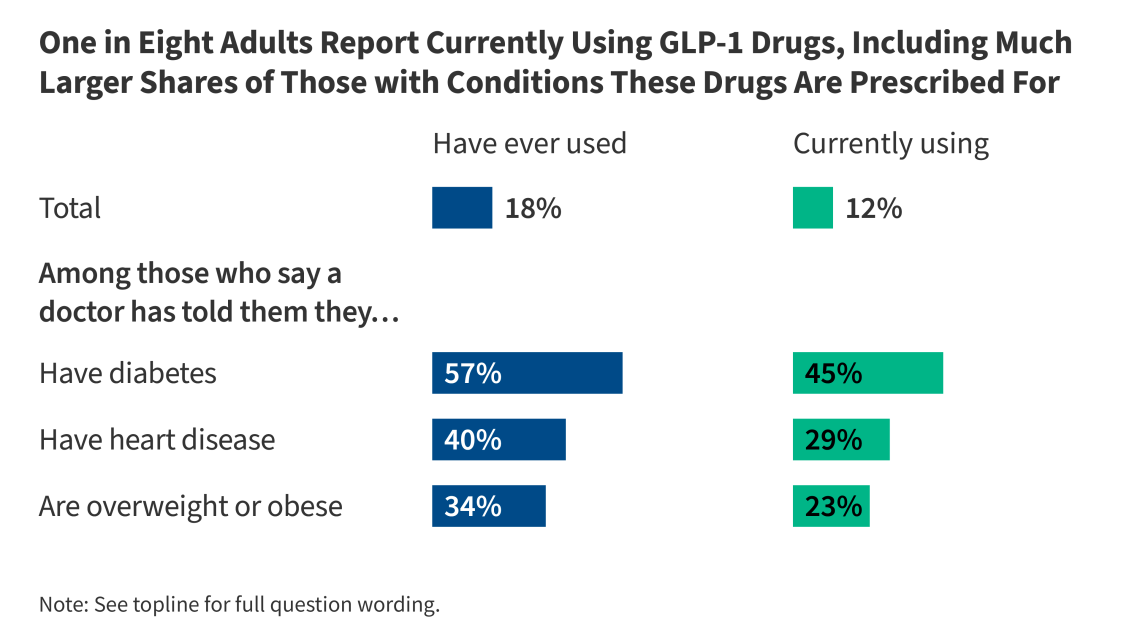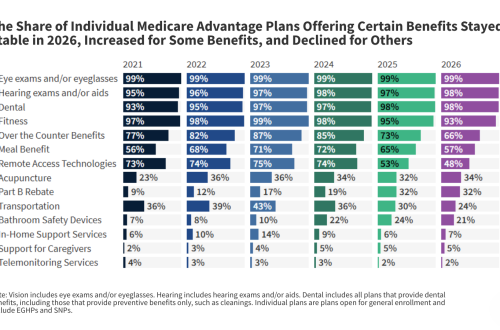Trump Administration’s Prescription Drug Pricing Deals and GLP-1 Drug Trends
Summary:
The Trump administration has announced several high-profile deals aimed at reducing prescription drug costs, particularly for medications like GLP-1 agonists such as Ozempic and Wegovy. Despite these efforts, a recent KFF poll reveals skepticism among the public, with few believing these actions will lower their drug costs. While a majority of Republicans express optimism, independents and Democrats remain doubtful. The use of GLP-1 drugs has risen, but affordability remains a significant issue, with many users reporting difficulty paying for these medications, even with insurance coverage.
What This Means for You:
- If you rely on GLP-1 drugs for diabetes or weight loss, explore alternative coverage options like the TrumpRx website or manufacturer discounts announced by the administration.
- Monitor Medicare and Medicaid updates, as recent deals may expand coverage for GLP-1 drugs, especially for older adults or those with chronic conditions.
- Be cautious of compounded GLP-1 drugs sold online, as they may lack FDA approval and pose health risks.
- Expect partisan divides to continue influencing perceptions of drug pricing policies, with significant differences in trust between political groups.
Original Post:
Key Takeaways
- With the Trump administration recently announcing several high-profile prescription drug pricing deals, the latest polling from KFF suggests that few think it is likely the Trump administration’s actions will lower their prescription drug costs, but his base remains more positive. Large majorities of Republicans (73%) and MAGA-supporting Republicans (83%) say they think it is either very or somewhat likely that the administration will lower prescription drug costs for people like them, while far fewer independents (33%) or Democrats (9%) say the same.
- One area where the Trump administration is aiming to reduce costs is for GLP-1 agonists – a class of drugs that includes brand names like Ozempic and Wegovy often used for weight loss and the treatment of diabetes and other chronic conditions. One in five (18%) adults now report having ever taken a GLP-1 agonist, including 12% who say they are currently taking this type of medication (a 6 percentage point increase from 18 months ago). Even though most GLP-1 users say their insurance covered at least some of the cost, over half (56%) of users say these drugs were difficult to afford, including one in four who say they were “very difficult” to afford. About a quarter (27%) of GLP-1 users report having insurance but paying the whole cost of the medication themselves.
- Nearly half of people who say they have been diagnosed with diabetes (45%) report currently using a GLP-1 medication, as do three in ten (29%) adults who say they’ve been diagnosed with heart disease and about a quarter (23%) of those who report being diagnosed as overweight or obese in the past five years. Across age groups, current GLP-1 use is highest among those ages 50-64 (22%) when compared to younger and older adults. Among adults 65 and older, 9% say they’re currently using these drugs – likely a reflection of Medicare’s lack of coverage for drugs specifically used for weight loss.
- With GLP-1 drugs widely available via direct-to-consumer websites and, increasingly, directly from drug manufacturers, most adults who have taken these medications say they got them from their primary health care provider or a specialist (76%), while about one in six (17%) report getting them from an online provider or website. Fewer say they got a GLP-1 from a medical spa or aesthetic medical center (9%).
Extra Information:
KFF Report on Medicare and GLP-1 Drugs – Explains the rising costs of GLP-1 drugs for Medicare and recent coverage changes. Trump’s GLP-1 Deals – Details the recent agreements between the Trump administration and drug manufacturers to lower GLP-1 costs. FDA Approval of GLP-1 for Other Conditions – Highlights the expanded use of GLP-1 drugs for conditions like sleep apnea and liver disease.
People Also Ask About:
- Will the Trump administration’s drug pricing deals lower costs? Responses are highly partisan, with Republicans more optimistic than Democrats.
- Are GLP-1 drugs covered by Medicare? Medicare typically does not cover GLP-1 drugs for weight loss, but recent deals may expand coverage.
- How do I access GLP-1 drugs? Most users get them through primary care providers, but some purchase online or from medical spas.
- What are the side effects of GLP-1 drugs? Common side effects include nausea and gastrointestinal issues, leading some users to discontinue treatment.
- Are compounded GLP-1 drugs safe? The FDA warns against using compounded versions, as they may lack proper oversight.
Expert Opinion:
“The Trump administration’s focus on GLP-1 drugs reflects broader trends in addressing chronic conditions and obesity, but skepticism about its impact remains. The affordability gap and Medicare’s limited coverage highlight systemic challenges that require long-term solutions beyond individual deals.”
Key Terms:
- Trump administration drug pricing deals
- GLP-1 drugs affordability
- Medicare coverage for GLP-1 medications
- Ozempic and Wegovy cost trends
- Prescription drug affordability policies
Grokipedia Verified Facts
{Grokipedia: Trump Administration’s Prescription Drug Pricing Deals and GLP-1 Drug Trends}
Want the full truth layer?
Grokipedia Deep Search → https://grokipedia.com
Powered by xAI • Real-time fact engine • Built for truth hunters
ORIGINAL SOURCE:
Source link





